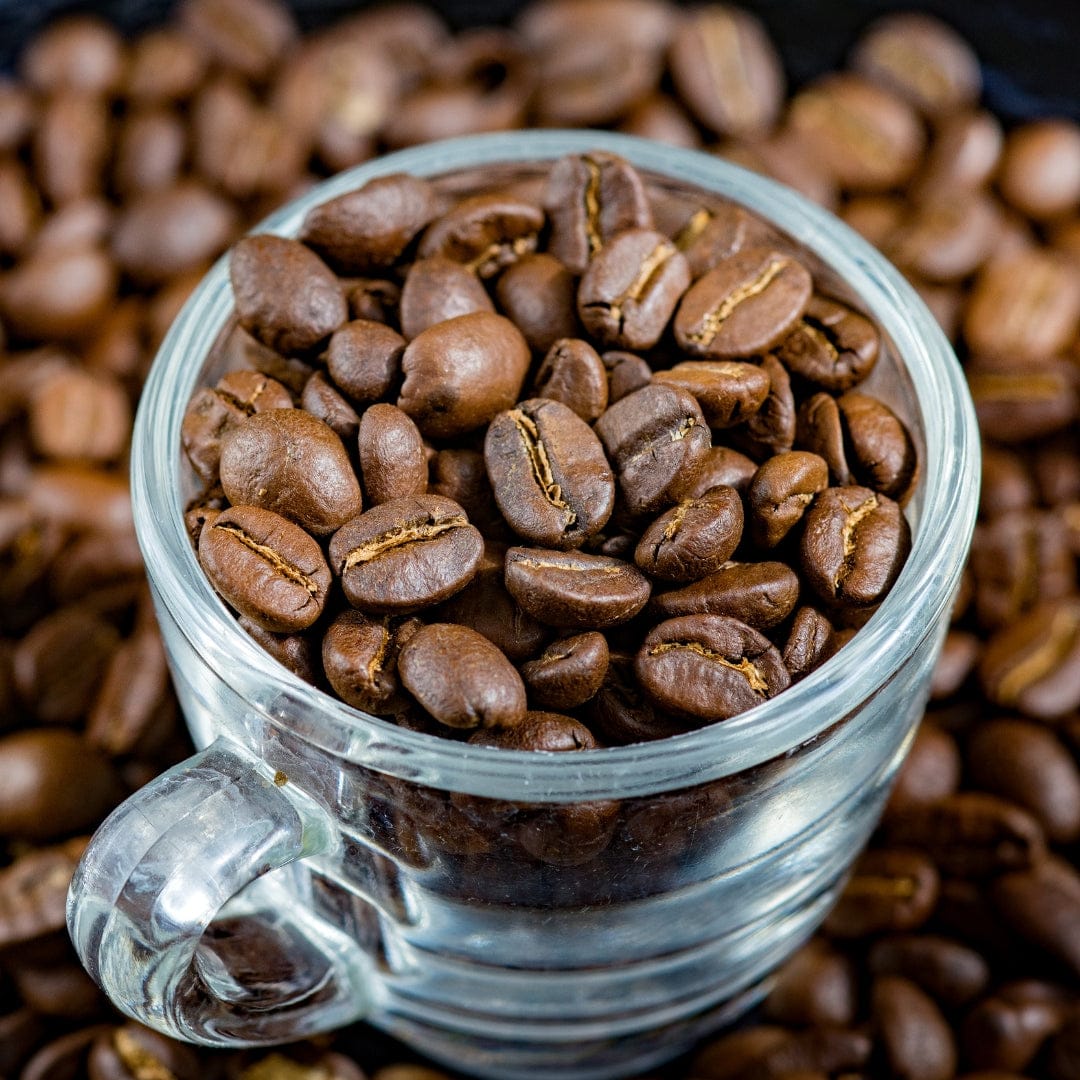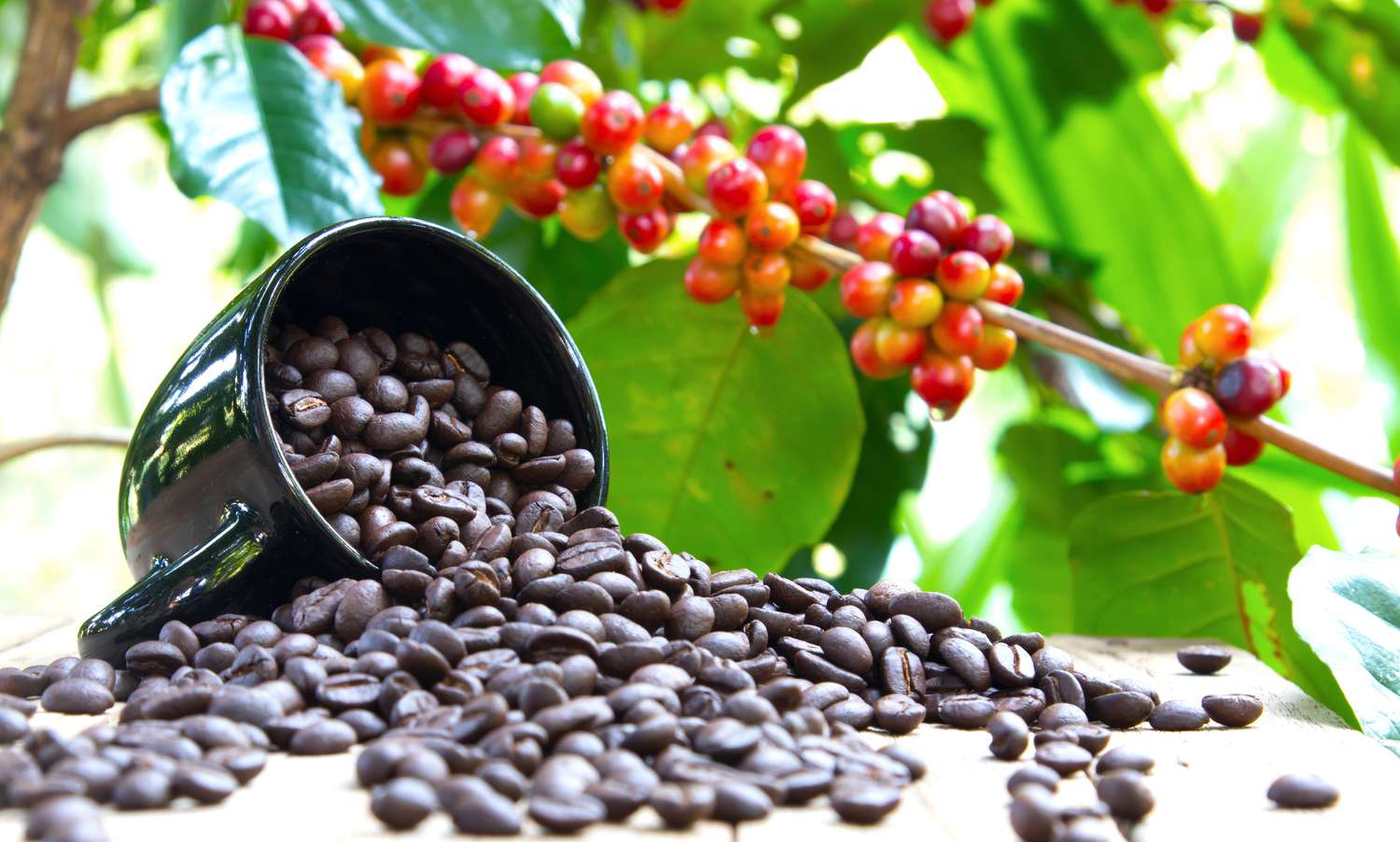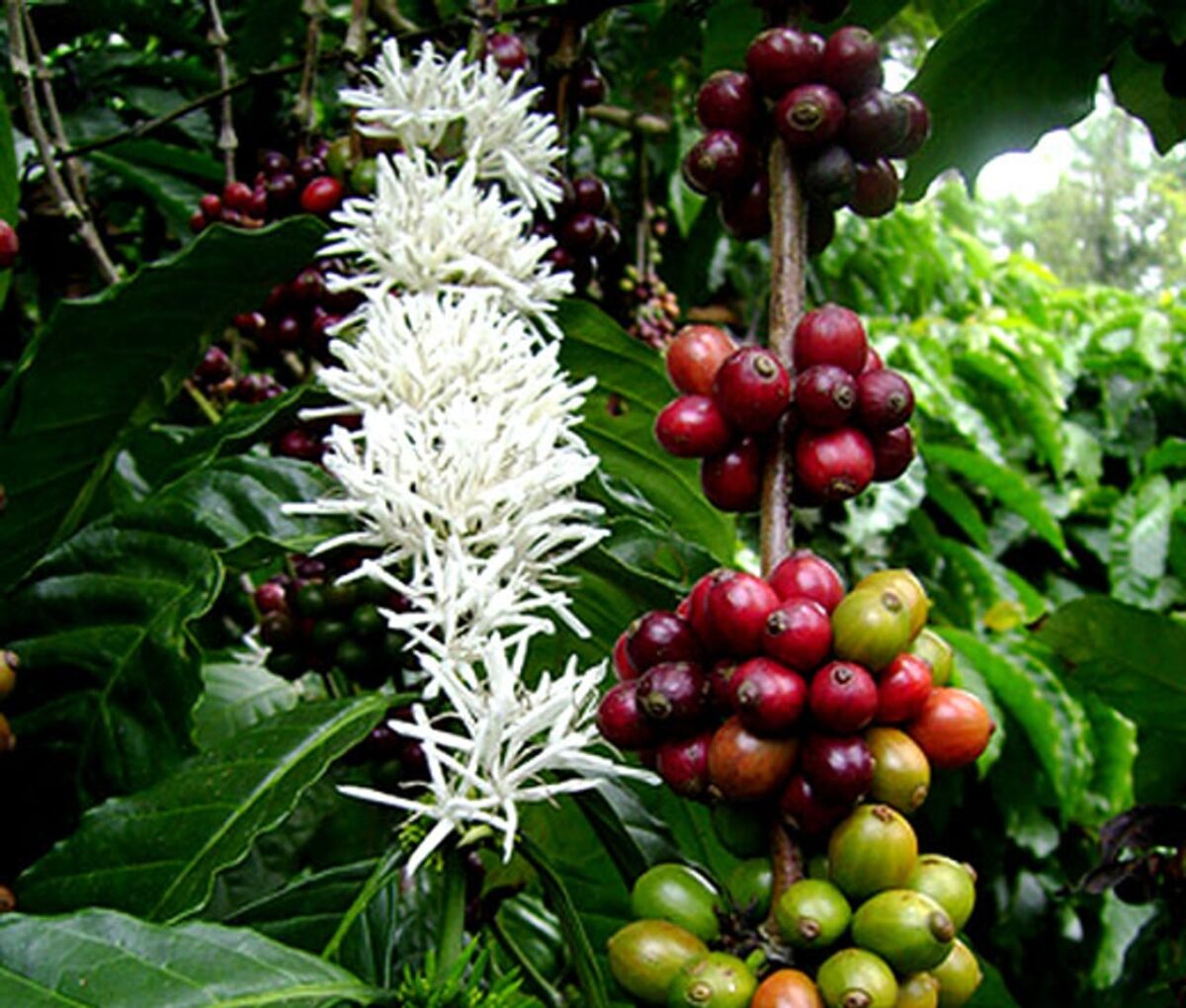Discover the exquisite world of arabica coffee, a beloved brew cherished for its rich flavors and captivating aroma. Originating from the high altitudes of Ethiopia, this exceptional coffee variety has gained global recognition for its superior quality and diverse profiles. As we delve into the enchanting journey of arabica coffee, you will learn about its unique characteristics and various types. Prepare to be inspired by the profound impact this beverage has on coffee culture and its promise for a sustainable future. Let’s embark on this aromatic adventure together!
Introduction to Arabica Coffee
Arabica coffee, often hailed as the crème de la crème of coffee beans, holds a special place in the hearts of coffee enthusiasts worldwide. Renowned for its smooth flavor and aromatic complexity, arabica coffee accounts for roughly 60-70% of global coffee production, making it the most popular coffee type on the market.
Here are some remarkable features that define arabica coffee:
- Flavor: Often described as sweet and fruity, with hints of sugar, chocolate, or berries, arabica coffee showcases a diverse range of tasting notes that appeal to a wide audience.
- Acidity: Typically, arabica coffee has a bright acidity that adds to its complex taste profile, distinguishing it from its counterpart, robusta coffee.
- Altitude: Grown in higher elevations, arabica coffee thrives in cooler climates, contributing to its delicate and nuanced flavor.
As consumers increasingly demand high-quality coffee, understanding the significance of arabica coffee becomes essential. More than just a beverage, it represents a rich heritage and tradition that spans continents. Whether you savor it alone or in blends, arabica coffee continually enchants the palate, promising a delightful experience with every sip.

The Origins of Arabica Coffee
The rich narrative of arabica coffee begins in the ancient highlands of Ethiopia, where the Coffea arabica plant emerged thousands of years ago. This exquisite coffee variety has traveled across continents, shaping cultures and traditions wherever it settled.
Key milestones in its journey include:
- Discovery: According to legend, a goat herder named Kaldi stumbled upon the energizing beans when he noticed his goats frolicking after eating the berries.
- Ethiopia to Arabia: By the 15th century, traders transported arabica coffee from Ethiopia to Yemen, where it gained popularity and began cultivation in the region’s monasteries.
- Global Expansion: Growing demand ignited a coffee boom, leading to arabica coffee being introduced to Europe in the 17th century and beyond. From there, it spread to Central and South America, adapting to various climates and flavors.
This fascinating journey demonstrates arabica coffee’s natural adaptability and prolonged significance.
In praise of its legacy, arabica coffee features exceptional flavor profiles that continue to captivate coffee aficionados worldwide. Ultimately, the origins of arabica coffee reflect not only a journey of a bean but also a remarkable cultural exchange that forever transformed our relationship with this beloved beverage.
Characteristics of Arabica Coffee Beans
Arabica coffee beans are renowned for their distinct features that set them apart from other varieties. Recognized as one of the most popular types of coffee in the world, arabica coffee accounts for about 60-70% of global coffee production. Here’s why:
Key Characteristics:
- Flavor Profile:
- Arabica coffee typically exhibits a sweeter, softer taste with a wide range of flavor notes, including hints of fruity, floral, and nutty nuances.
- Acidity:
- It has a bright acidity that adds to the overall complexity of its flavor, making it more vibrant and enjoyable than its counterpart, robusta.
- Caffeine Content:
- Arabica beans contain about 1.5% caffeine, which is less than robusta beans at around 2.5%. This lower caffeine content contributes to arabica coffee’s smoothness.
- Bean Shape:
- Arabica coffee beans are typically oval-shaped with a curved crease on one side, while robusta beans are rounder and flatter.
Comparison Table: Arabica vs. Robusta Beans
| Characteristic | Arabica Coffee | Robusta Coffee |
|---|---|---|
| Flavor | Sweet, fruity, floral | Strong, earthy, bitter |
| Caffeine Content | 1.5% | 2.5% |
| Acidity | High | Low |
| Shape | Oval with curved crease | Round and flat |
These unique characteristics make arabica coffee a favorite among coffee connoisseurs who appreciate its rich and diverse flavor profile.
Popular Arabica Coffee Varieties
Arabica coffee boasts a rich tapestry of varieties, each offering distinct flavors and characteristics that coffee enthusiasts adore. Here are some of the most popular types of arabica coffee that you should consider:
- Typica: Known for its balanced sweetness and bright acidity, Typica is a classic arabica variety that serves as the foundation for many others. Its flavor profile includes caramel and chocolate notes, which delight the palate.
- Bourbon: This variety is celebrated for its rich and complex flavor, often featuring a velvety body and hints of sweetness, nuts, and even fruity undertones. Bourbon arabica coffee is cherished for its long finish, making it a favorite among connoisseurs.
- Caturra: A mutation of Bourbon, Caturra is loved for its bright acidity and medium body. It presents a clean cup, often revealing citrusy notes. This variety thrives at lower altitudes, making it accessible to various coffee-growing regions.
- Geisha: Originating from Ethiopia, Geisha has gained fame for its floral aroma and vibrant acidity. Often described as tea-like, this exotic variety surprises drinkers with its unique jasmine and bergamot flavors.
Here is a brief comparison of these varieties based on Flavor, Acidity, and Body:
| Variety | Flavor Profile | Acidity | Body |
|---|---|---|---|
| Typica | Caramel and chocolate | Bright | Medium |
| Bourbon | Rich, sweet, nutty, fruity | Medium | Full |
| Caturra | Clean, citrusy | Bright | Medium |
| Geisha | Floral, tea-like | Vibrant | Light |
In conclusion, these popular arabica coffee varieties exhibit the incredible diversity found within the arabica bean family, ensuring that there is a perfect cup for every taste preference.

The Flavor Profiles of Arabica Coffee
When it comes to flavor, arabica coffee truly shines and captivates coffee lovers around the world. Known for its mild and nuanced taste, arabica coffee beans produce a wide array of flavor profiles that can vary greatly based on their origin, processing methods, and brewing techniques. Here are some delightful characteristics of arabica coffee:
- Sweetness: Many arabica coffees boast a natural sweetness, often likened to caramel or sugarcane.
- Acidity: The brightness in flavor often comes from mild acidity, which can be described as fruity or wine-like.
- Fruity Notes: From berries to citrus, arabica coffees often reveal complex fruit notes, providing an exciting tasting experience.
- Floral Undertones: Some varieties showcase subtle floral aromas, adding depth and elegance to the overall profile.
- Nutty and Chocolaty Flavors: A rich, nutty finish or hints of chocolate can often be found, especially in darker roasts.
To help you navigate these flavor profiles, consider the following comparative table of popular arabica varieties:
| Arabica Variety | Flavor Notes | Acidity Level |
|---|---|---|
| Ethiopian | Winey, fruity, floral | High |
| Colombian | Caramel, nutty, chocolate | Medium |
| Guatemalan | Cocoa, spiced, sweet | Low |
| Brazilian | Nutty, chocolate, smooth | Low |
In summary, the exquisite flavor profiles of arabica coffee showcase the remarkable diversity and artistry behind this beloved beverage, inviting enthusiasts to explore its rich tapestry of tastes.
Brewing Techniques for Arabica Coffee
Brewing the perfect cup of arabica coffee is an art, one that allows coffee lovers to unveil the rich flavors and delightful aromas unique to this exquisite bean. Here are some remarkable brewing techniques that bring out the best in arabica coffee, ensuring a delightful experience with each sip.
- Pour Over: This method provides precise control over water temperature and flow rate, allowing the nuanced flavors of arabica coffee to shine through. It highlights brightness and complexity in the tasting notes.
- French Press: With a bold, full-bodied brew, the French press immerses the grounds in hot water, extracting rich oils and flavors. The coarse grind of arabica coffee works exceptionally well with this technique, resulting in a robust cup.
- Espresso: Ideal for short, intense bursts of flavor, espresso brewing emphasizes the sweet and fruity notes of arabica coffee. The high pressure during extraction brings out a syrupy consistency that’s simply divine.
- Cold Brew: This method extracts coffee flavors over an extended period using cold water, yielding a smooth and less acidic cup. The slow extraction process beautifully enhances the inherent sweetness of arabica coffee.
In summary, whether you prefer the precision of pour over or the simplicity of a French press, each brewing technique reveals different dimensions of arabica coffee. Explore these methods to find your perfect brew and savor every satisfying sip.
Arabica vs. Robusta: The Great Coffee Debate
When it comes to coffee, the distinction between Arabica coffee and Robusta coffee sparks endless discussions among enthusiasts. Each type boasts unique qualities, making them suitable for different palates and brewing methods. Let’s examine the key differences between these two giants of the coffee world.
| Feature | Arabica Coffee | Robusta Coffee |
|---|---|---|
| Flavor Profile | Sweet, fruity, and mild | Earthy, bitter, and heavy |
| Caffeine Content | Lower (about 1-1.5%) | Higher (about 2-2.5%) |
| Growing Conditions | Prefers higher altitudes and cooler climates | Thrives in lower altitudes and warmer temperatures |
| Shape of Beans | Oval and flat | Round and somewhat straight |
| Cost | Generally more expensive | Relatively cheaper |
Arabica coffee is often favored for its nuanced flavors and aromatic qualities, making it the choice for gourmet blends. In contrast, Robusta coffee is reputed for its robust, straightforward flavor and higher caffeine content, perfect for espresso lovers who crave a stronger kick.
In conclusion, both Arabica coffee and Robusta coffee hold significant places in the hearts of coffee drinkers around the world. Whether you prefer the smooth, refined taste of Arabica or the boldness of Robusta, each type offers a unique experience worth celebrating in your daily brew.

Sustainability in Arabica Coffee Production
As coffee enthusiasts become increasingly aware of environmental issues, sustainability in Arabica coffee production emerges as a crucial topic. The demand for high-quality Arabica coffee often leads to intensive farming practices, which can adversely affect ecosystems. However, many producers are shifting to eco-friendly methods to preserve biodiversity and promote social responsibility.
Key Sustainable Practices:
- Shade-Grown Coffee: This method involves planting Arabica coffee trees under the canopy of larger trees, promoting biodiversity and offering a natural habitat for various species.
- Organic Farming: By avoiding synthetic pesticides and fertilizers, farmers can enhance soil health, reduce water pollution, and ensure a more sustainable growing environment for Arabica coffee.
- Fair Trade Practices: Supporting fair wages for farmers fosters community development and encourages sustainable agricultural techniques.
Benefits of Sustainable Arabica Coffee:
| Benefit | Description |
|---|---|
| Environmental Health | Reduces chemical runoff and promotes biodiversity |
| Economic Viability | Supports local economies and fair labor practices |
| Quality Improvement | Sustainable methods often lead to superior flavor profiles |
The adoption of sustainable practices in Arabica coffee production not only preserves the natural environment but also produces a product that coffee lovers can enjoy guilt-free. By choosing sustainably sourced Arabica coffee, consumers play an essential role in the brighter future of coffee cultivation.
The Future of Arabica Coffee
As we look ahead, the future of arabica coffee holds both promise and challenges. The growing global demand for this beloved brew compels growers, scientists, and consumers alike to prioritize sustainable practices and innovative cultivation techniques. Here are a few key trends shaping the future of arabica coffee:
- Climate Resilience: With climate change threatening coffee crops, there is an urgent need to develop more resilient varieties of arabica coffee. Research focuses on genetic modifications and breeding programs that can withstand higher temperatures and changing rainfall patterns.
- Sustainable Farming Practices: As awareness of environmental issues grows, farmers are adopting eco-friendly practices, such as shade-grown coffee and organic farming. These methods not only enhance coffee quality but contribute positively to local ecosystems and communities.
- Direct Trade Models: Increasingly, consumers are seeking transparency in their coffee supply chain. Direct trade models empower farmers and foster closer relationships between producers and consumers, ensuring fairer prices and better quality arabica coffee.
- Technological Advancements: Innovations such as precision agriculture are helping farmers optimize yields. Drones, soil sensors, and data analytics allow for smarter farming decisions, ultimately improving the quality of arabica coffee.
Looking forward, the future of arabica coffee hinges on a balanced approach that respects tradition while embracing innovation. By prioritizing sustainability and quality, we can ensure that this exceptional coffee continues to flourish for generations to come.
Conclusion: Celebrating Arabica Coffee
As we journey through the world of arabica coffee, it becomes evident that this remarkable bean captivates coffee enthusiasts for various reasons. From its rich history to its diverse flavor profiles, arabica coffee stands out as a beloved choice among connoisseurs.
- Rich Heritage: The origins of arabica coffee in Ethiopia highlight its ancient roots, making each cup a connection to centuries of tradition.
- Complex Flavors: The wide array of flavors, from fruity to nutty and floral, offers something for every palate, ensuring that each tasting experience remains unique.
- Quality Brews: With various brewing techniques available, aficionados can explore numerous ways to enjoy their beloved arabica coffee, elevating daily rituals into moments of joy.
In conclusion, celebrating arabica coffee means embracing its complexities and the artistry behind each brew. This enchanting bean not only fuels our mornings but also fosters community and tradition. As we continue to explore the depths of this coffee variety, let us appreciate the dedication of farmers, roasters, and baristas who contribute to the rich tapestry of arabica coffee culture. Here’s to the exquisite journey of discovery that every cup promises!

Frequently Asked Questions
What distinguishes Arabica coffee from other types of coffee?
Arabica coffee is renowned for its exceptional quality and unique flavor profile, setting it apart from other coffee varieties like Robusta. It thrives at high altitudes, developing a more delicate and nuanced taste which encompasses a range of flavors from sweet to fruity, often with a hint of acidity. The Arabica beans typically feature a higher sugar content, lower caffeine levels, and a broader spectrum of taste, making them a favorite among coffee connoisseurs.
What are the most popular varieties of Arabica coffee?
There are several esteemed varieties of Arabica coffee, each with its unique characteristics. Common examples include Typica and Bourbon, both celebrated for their sweet and complex flavors. The Geisha variety, originating from Ethiopia and popularized in Panama, is particularly famed for its floral and jasmine notes, fetching high prices at auctions. Other notable varieties include Caturra and SL28, which each offer their own distinct tasting notes and best growing conditions, highlighting the vibrant diversity within Arabica coffee.
How should Arabica coffee be brewed for the best flavor?
Brewing Arabica coffee to showcase its refined flavors can be an art form. It is recommended to use fresh, filtered water, heated to just below boiling point, ideally around 195°F to 205°F. Methods like pour-over, French press, or AeroPress can particularly enhance its flavor profile. The coffee-to-water ratio is essential; a common recommendation is 1:15, allowing the unique notes of the Arabica beans to shine through. Experimenting with grind size and brew time will further elevate the coffee experience.
Why is Arabica coffee considered premium?
Arabica coffee is often deemed premium due to its superior quality and labor-intensive cultivation process. It requires specific climate conditions—elevated temperatures and altitudes—and is more susceptible to pests and diseases compared to Robusta. These challenges mandate more attentive farming practices, often leading to artisanal cultivation. The result is a bean that yields a richly flavorful cup, accentuated by aromatic complexities that are simply unmatched, solidifying its reputation among aficionados as the superior choice.
What regions are famous for growing Arabica coffee?
Arabica coffee flourishes in regions known as the “coffee belt,” with renowned countries including Ethiopia, Colombia, and Costa Rica leading the charge. Ethiopia is the birthplace of Arabica and is celebrated for its incredible variety of flavor profiles influenced by different growing conditions. Colombia is famed for its smooth and well-balanced taste due to its ideal growing altitude and climate. Additionally, Costa Rica prides itself on producing high-quality Arabica beans cultivated with sustainable practices, making these regions pillars in the global Arabica coffee market.

